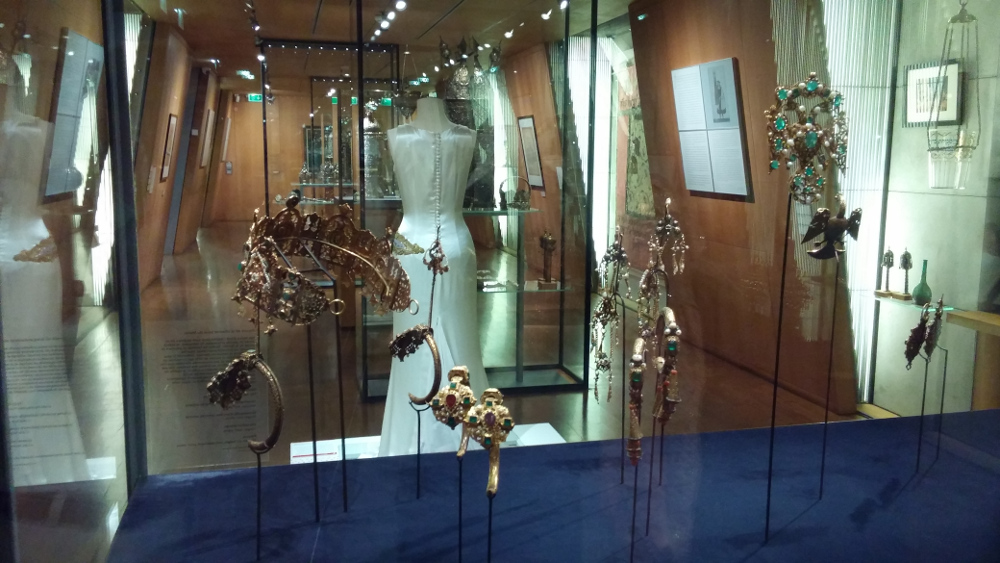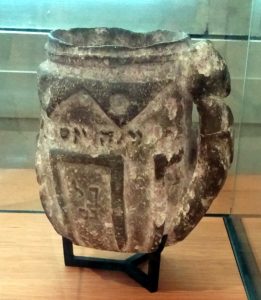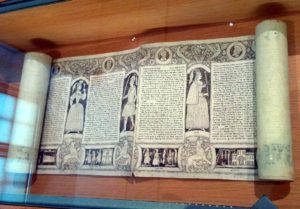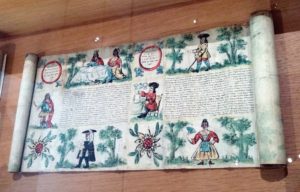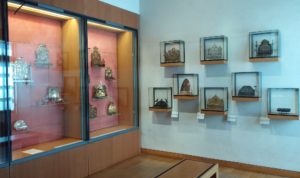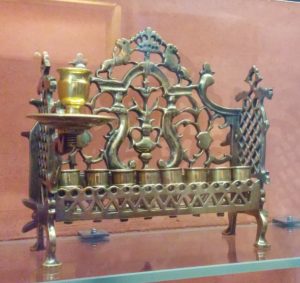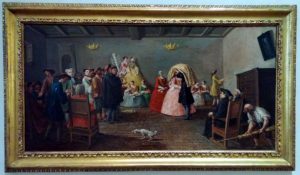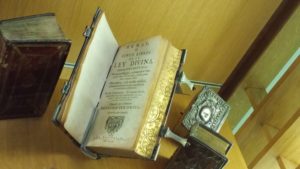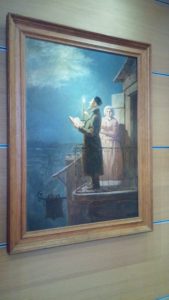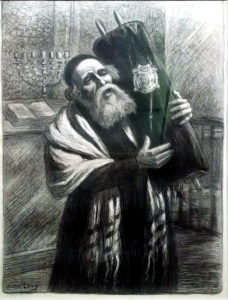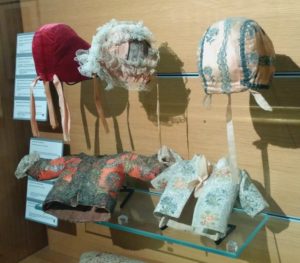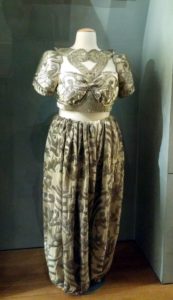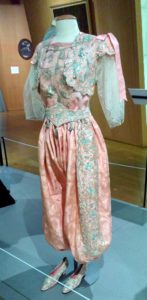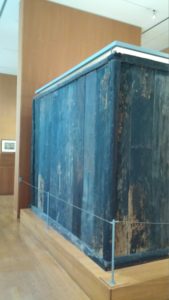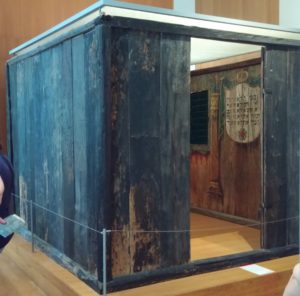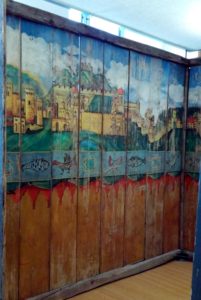A highlight of our trip to France was the Museum of Art and History of Judaism (Musée d’art et d’histoire du Judaïsme) in Paris.
It’s well laid out and can be enjoyed by Jewish and non-Jewish visitors alike. I’m still traveling, so there’s no time for a long post, but I wanted to share 19 photos that I hope will make readers want to visit this wonderful museum.
Let’s start with Purim items, and begin with one of the older pieces in the museum:
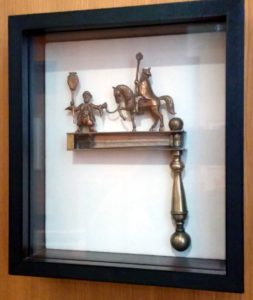
A Purim noisemaker from late-19th-century France, depicting Haman leading Mordecai through the streets of Shushan.
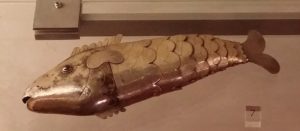
One of the more unusual designs seen at the museum: a Havdalah spice box from 19th-century Poland, shaped like a fish.
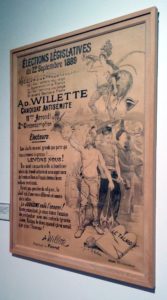
A small area is devoted to 19th-century French anti-Semitism, including this 1889 campaign poster for “Adolphe Willette, Anti-Semitic Candidate.” “VOTERS: The Jews are powerful only because we are on our knees!… LET US STAND UP!”
The museum’s bookshop is impressive, too. It’s large and well stocked with volumes in English and French (among other languages), as well as countless DVDs and CDs and a fine selection of Judaica. I came away with a dictionary I hadn’t known about: Joseph Nehama’s 600-page Ladino-to-French volume, the Dictionnaire du judéo-espagnol.

